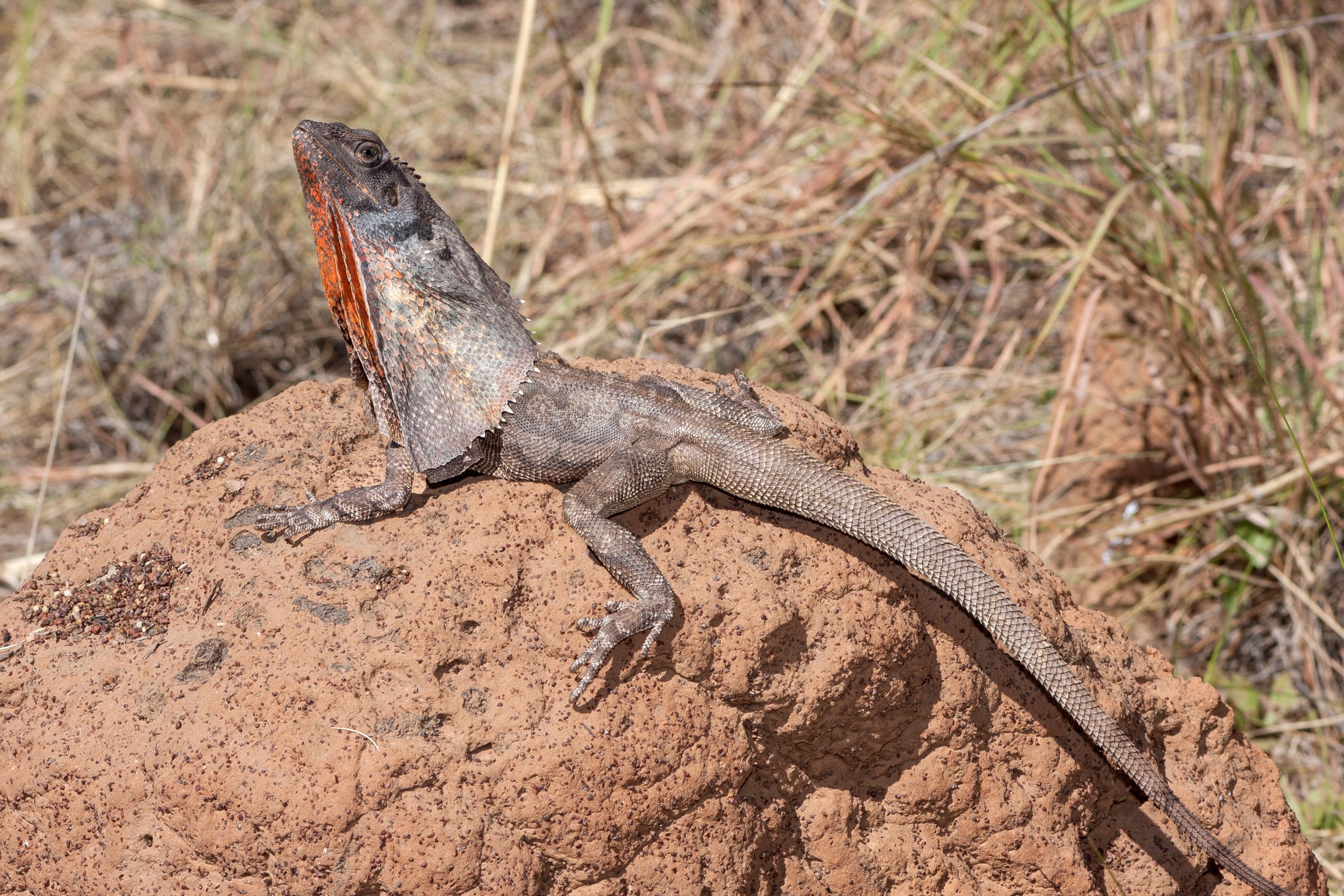Frilled-neck lizard
(Chlamydosaurus kingii)

Description
The frilled lizard (Chlamydosaurus kingii), also known commonly as the frill-necked lizard, frilled dragon or frilled agama, is a species of lizard in the family Agamidae. The species is endemic to northern Australia and southern New Guinea. This species is the only member of the genus Chlamydosaurus. Its common names come from the large frill around its neck, which usually stays folded against the lizard's body. C. kingii is largely arboreal, spending the majority of its time in the trees. Its diet consists mainly of insects and small vertebrates. Frill-necked lizards, or 'frillies' as some call them, will occasionally eat plants as well, although this behaviour is uncommon. It's a relatively large lizard, averaging 85 cm (2.79 ft) in total length (including tail) and is kept as an exotic pet. The frill-necked lizard is a relatively large member of the agamid family, growing up to 85 cm (2.79 ft). It is capable of bipedal locomotion and has been described as regularly moving in this manner with a purposeful stride at times by naturalists. Colouration tends to be brown or grey with spots and blotches of darker colours mixed in a mottled fashion to give the appearance of tree bark. There is not one standard colour: rather, colouration varies according to the lizard's environment. For example, a lizard found in a dryer, clay filled environment will most likely have a collage of oranges, reds, and browns; whereas a lizard found in a damper, more tropical region will tend to show darker browns and greys, and some greens. This suggests they are adapted to their habitats; their colours are a form of camouflage. The most distinct feature of these lizards is the large ruff of skin which usually lies folded back against its head and neck. The neck frill is supported by long spines of cartilage which are connected to the jaw bones. When the lizard is frightened, it produces a startling deimatic display: it gapes its mouth, exposing a bright pink or yellow lining; it spreads out its frill, displaying bright orange and red scales; raises its body; and sometimes holds its tail above its body. This reaction is used for territorial displays, to discourage predators, and during courtship. The red and orange parts of its frill contain carotenoid pigments.
Taxonomic tree:







